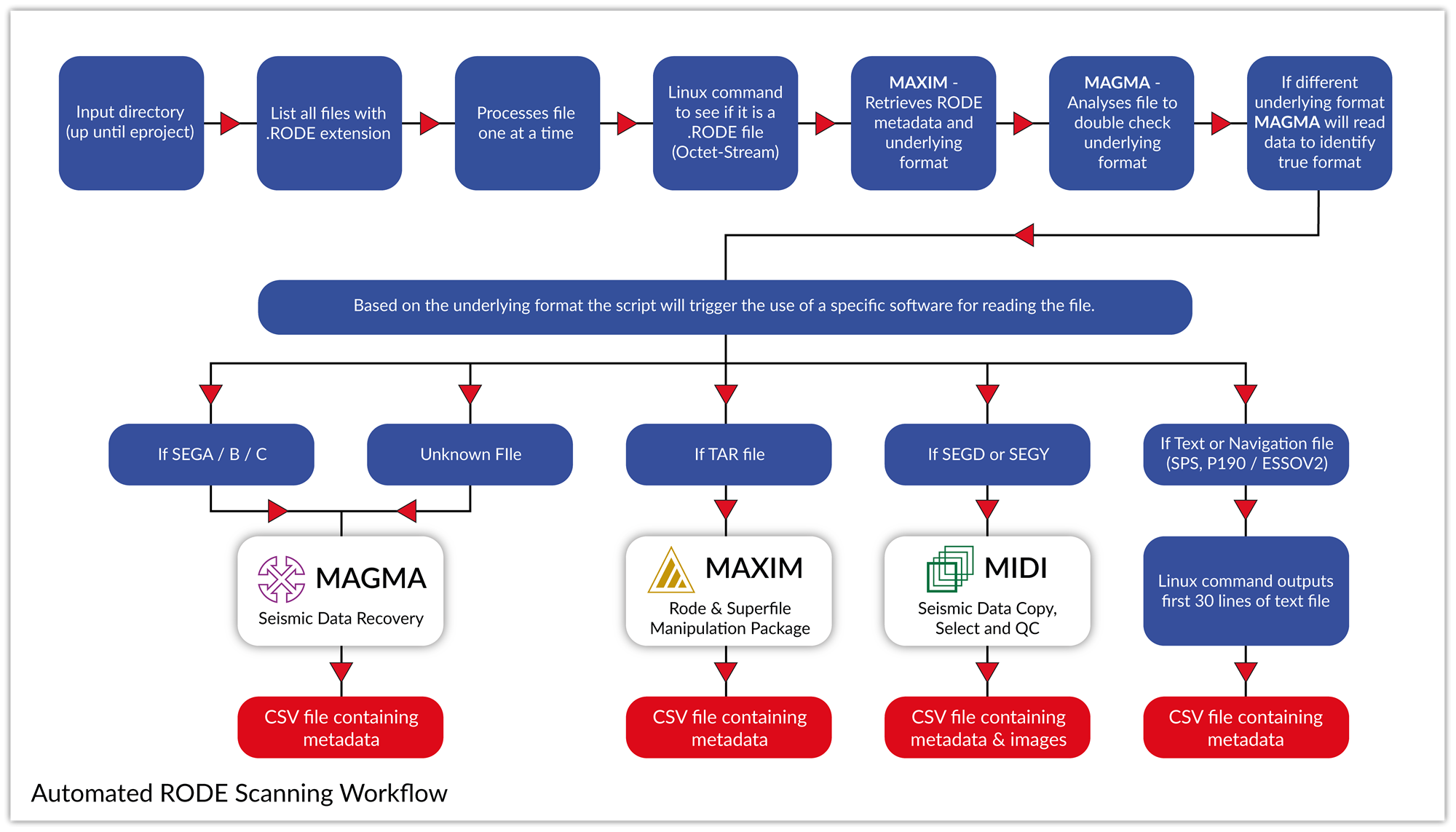Seismic Data Management Software
Troika develops a range of software modules to improve efficiency over the life cycle of your seismic data.
Software Packages
Our software can be purchased either individually or as part of one of our suites, the package can be tailored to cover all your seismic data management requirements in the most cost-effective manner. We offer the software as a perpetual licence or leased, with the addition of our support and maintenance pack the software will benefit from all future upgrades and on hand support when required.
Single Module
Our software can be bought or leased individually as a stand-alone module or modules to cover a specific set of requirements.
Available modules:
Geom – Fast 3D Dataset Geometry Analysis
Magma – Seismic Data Recovery
Marlin – Seismic Data Trawler
Midi – Seismic Data Copy, Select, and QC
Minima – QC and Rationalise SEG-Y and Navigation Data
Maxim – Rode and Superfile Manipulation Package
Data Management Suite
Our Data Management Suite has been carefully compiled to provide the capability to discover, analyse, prepare, and condition your datasets.
DMS contains the following software:
Marlin – Seismic Data Trawler
Midi – Seismic Data Copy, Select, and QC
Minima – QC and Rationalise SEG-Y and Navigation Data
Data Management Suite Plus
Our Data Management Suite Plus contains the DMS and allows any of the other modules to be added to create a tailored package to fulfil all your seismic data management needs.
The following modules can be added into the DMS Plus:
Geom – Fast 3D Dataset Geometry Analysis
Magma – Seismic Data Recovery
Maxim – Rode and Superfile Manipulation Package
To discuss the options or for further information, please contact us and a member of our team will be happy to assist and answer any questions. Click here to contact
Software Modules
Data Management Suite
Troika develops unique solutions to retrieve and repair legacy formats, merge and check navigation data, and visualise quality control attributes.
Functionality includes highly flexible data selection options during input and/or output, decoding, error checking and fault fixing to condition 2D or 3D data and related positioning information either as a stand-alone procedure or as the front-end for processing and analysis. Benefitting from its long-standing contribution to the SEG Technical Standards Committee, Troika provides systems to efficiently validate – and if necessary correct – the contents of a seismic data library’s conformance to SEG-Y and SEG-D industry standard formats, thereby ensuring compliance to company or other regulatory requirements.
Troika has developed capabilities to identify and reformat a wide range of legacy recording formats and media and its world-leading transcription software can handle field tapes, post-stack data and pre-stack data in a variety of sort types such as shot, CMP, offset or other modes. Systems have also been developed to extract seismic and related metadata from record-oriented data encapsulation (RODE) format files.
Software is accessed via a highly intuitive graphical user interface (GUI), enabling geoscientists, engineers, and data management personnel to quickly learn and optimally use its extensive functionality. With more than 6,500 licenses worldwide, it is used by major international exploration and production (E&P) organisations, independents of all sizes, national oil companies (NOCs) and a wide range of oilfield and seismic service companies. It has been integrated as a front-end to several standard E&P systems for input and creation of GIS shapefiles.
Key Features & Benefits
- Fully customisable to the client’s requirements
- Supports all SEG standard formats
- Recognition and reformatting of historic data
- Deduplication reporting (data duplication)
- High speed trawl
- Predefined and customisable workflows
- Trace and surface imaging
- Automation
- Rapid analysis
- Automated tape drive discovery
- Data conditioning capabilities
- Import navigation data and populate SEGY headers (nav merge)
- RODE input, output, and metadata extraction
- Capable of dealing with all 2/3D field, pre- and post-stack data types
Workflow Examples
System Considerations
- Small packages, easy to install, can run on both Linux and Windows platforms
- Ability to be run in a lift and shift approach for cloud platforms
- Can run complex jobs on basic machines
- Simple to use GUI modules





